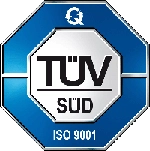Also known as the Van der Elst Visa, Article 27 paragraph 1-bis of T.U. 286/1998 regulates the entry into Italy of non-EU workers posted by EU companies for services under a service agreement.
The secondment to Italy of non-EU workers hired by companies based in an EU state is allowed outside the quotas established each year by the Flows Decree. In addition, unlike most other cases, such workers do not need to obtain a work visa.
To learn more about Italian work visas, take a look at our complete guide on Italy Work Visa.
Who can apply
Art. 27 paragraph 1-bis of T.U. nr 286/1998 defines the correct procedure to be followed in the case of Italian companies that have to take in posted non-EU workers who are regularly paid by employers (individuals or companies) resident or based in a member state of the European Union. In such a case, the Italian contracting company will have to notify the entry of the workers through a simplified telematic procedure.
Such posting procedure is always intended to be within the framework of a service agreement stipulated by an Italian contracting company and a contractor company based in the territory of the European Union, which is required to carry out such work, using its own labor force.
The current legal framework also allows for obtaining a work permit in the case of service subcontracting between several companies: in this case, the final client who assigned the work to the contracting company is required to provide it with a statement authorizing it to subcontracting the work to the foreign contractor company.
Non-EU workers for whom the application may be submitted must be duly paid employees by the contractor company, temporarily posted in Italy for the performance of the services covered by the contract. In particular, the workers must already be employees of the foreign contractor company on a date prior to the date of submission of the application and in any case with an employment relationship of not less than the duration of the posting in Italy.
How to submit the application
Communication to trade unions
As a first step, the contracting company will have to make known its intention to use non-EU personnel through a formal communication to the provincial bodies of the workers’ trade union organizations comparatively most representative in the sector.
Sending the prior notice of the entry of the workers
As a second step, the contracting company (or a delegated professional) will have to transmit through the dedicated portal of the Ministry of the Interior a formal communication of the contract under which the provision of services will take place. This communication consists of filling out the specific M2 Form.
The completion of Form M2 requires the inclusion of detailed information about the Italian contracting company and the procurement contract, such as:
- Copy of the identity document of the employer/legal representative or person delegated by notarized power of attorney. Note that if the employer is a foreign national legally residing in Italy, a copy of the valid residence permit will need to be submitted;
- Copy of the communication referred to in point 2.1;
- Copy of the procurement contract or subcontract containing: the subject of the procurement contract, the place of execution of the work, the duration of the contract and the workers to be used, the agreed remuneration for the execution of the work, the name identified by the contracting company as the safety manager;
- Copy of the D.U.V.R.I. (Single document on the assessment of risk from interference) for the operating unit/site at which the workers will be employed;
- In the case of subcontracting: copy of the subcontracting authorization issued by the prime consignor;
- Housing suitability certificate: the housing suitability certificate must be requested at the municipality where the housing is located and submitted to the immigration office. If, on the other hand, the employer prefers the worker to stay in a public facility, such as a hotel or residence, an accommodation letter is sufficient.
It is also necessary to submit information and documentation from the contractor company, such as:
- Documentation showing that the foreign company is registered with the corresponding foreign court/chamber of commerce;
- Copy of the financial statements of the foreign company;
- Copy of the passport of the legal representative of the foreign company and the workers to be transferred to Italy;
- Posting letter from the posting company signed for acceptance by the workers;
- Certificates of social security coverage referred to in Section 3.2.
If part of the documentation is drafted abroad, including the procurement contracting or subcontracting and the posting letter, such documentation must be legalized for use in Italy and translated into Italian.
Entry of workers into Italy
Following the sending of the prior entry notice, workers will be able to enter Italy without the need for a visa if they come from an EU country that is part of the Schengen area.
Type of work permit
Maximum duration of posting
The residence permit for procurement contracting can be requested for the period strictly necessary for the provision of the service covered by the procurement contract and in any case for a period not exceeding 2 years.
However, it is possible, in relation to the same procurement contract, to request an extension of the initial duration of the nulla osta, justified by an extension of the duration of the work necessary for the completion of the project, bearing in mind in any case that such an extension may be granted within the maximum limit of 4 years.
Further obligations
In application of the provisions of the Legislative Decree 136/2016, during the transfer to Italy, the foreign worker will have to be guaranteed the same minimum salary provided by the CNNL of the category applied by the applicant’s company.
In addition, it will be necessary to check whether or not there are bilateral social security conventions between Italy and the worker’s country of origin and therefore the need to apply for the certificate of social security coverage. In the absence of a convention, the contractor company will have to apply the Italian regulations on contributions and insurance.
Obligations upon entry into Italy
Application for residence permit
Within 8 days of entry into Italy, the foreign worker must go to the Sportello Unico Immigrazione of the competent Prefecture to register and subsequently apply for a residence permit.
Appointment for fingerprinting and issuance of the residence permit
For the purpose of the actual issuance of the residence permit, it should also be considered that, after the sending of the first postal kit, immediately after the signing of the Contract of Stay, the appointment for fingerprinting is set after a few months. The worker will necessarily have to appear in person at this appointment. From then on, it will take at least another 30 to 40 days for the actual residence permit to be issued.
Duration and renewal of the residence permit
The residence permit will be issued for a duration equal to the posting period, renewable if the nulla osta is extended. At the end of the services covered by the procurement contract or in case of early termination of the contract, the foreign worker is obliged to return to the country of origin.
The residence permit issued for procurement contracting purposes cannot be used by the foreign worker to carry out work other than the one authorized, nor for the performance of a different project, other services or by a different consignor than originally planned when the application was submitted. In addition, the residence permit cannot be converted into a permit for employment so the worker cannot be hired in Italy at the end of the posting period.



















